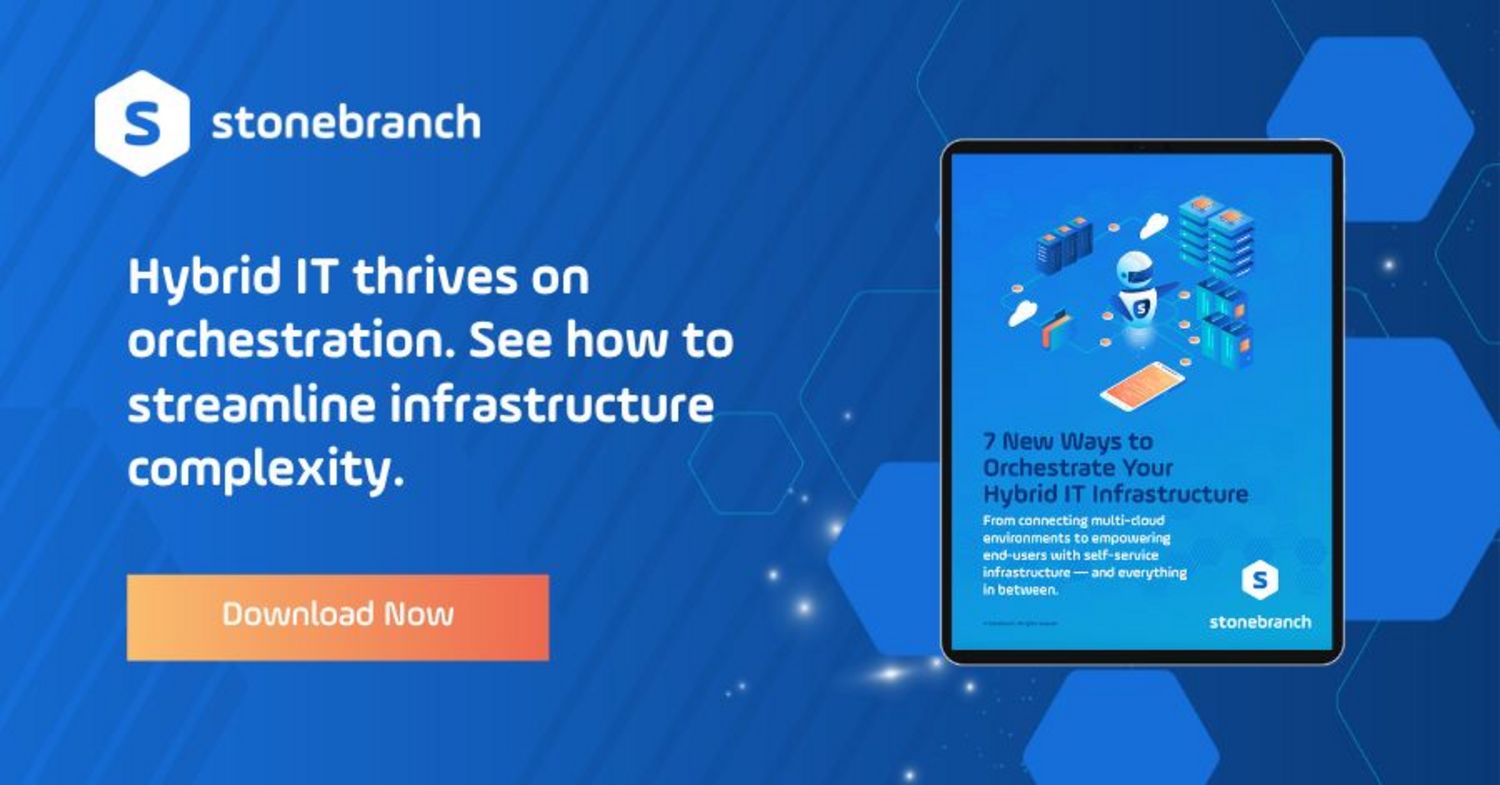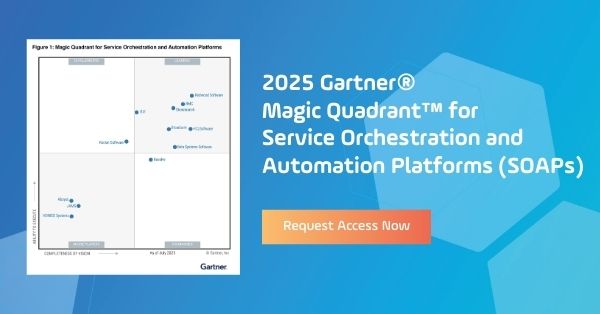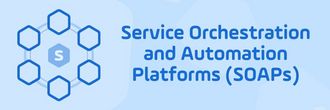Cloud Infrastructure Automation: Best Practices for Scalability and Resilience
Cloud infrastructure automation simplifies operations, optimizes costs, and boosts scalability. Discover best practices and automation tools for hybrid and multi-cloud environments.
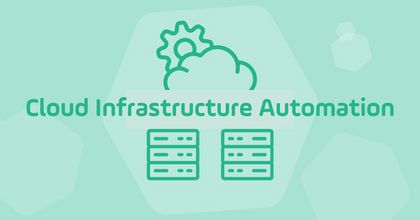
As enterprises increasingly rely on cloud-native services, managing and optimizing cloud infrastructure has become both a necessity and a challenge. Enter cloud infrastructure automation, a strategic enabler that allows IT teams to manage, scale, and secure cloud environments efficiently.
In this article, we'll explore:
- What cloud infrastructure automation is
- Best practices to automate cloud infrastructure
- How a service orchestration and automation platform (SOAP) can help drive success
What is Cloud Infrastructure Automation?
Cloud infrastructure automation uses tools and scripts to process the cloud-based workloads that are essential to the reliable delivery of IT operations, services, and environments. Best practices include infrastructure as code (IaC), policy-based automation, and self-service provisioning.
However, these aren't standalone practices — they fit into broader IT infrastructure automation and cloud automation strategies.
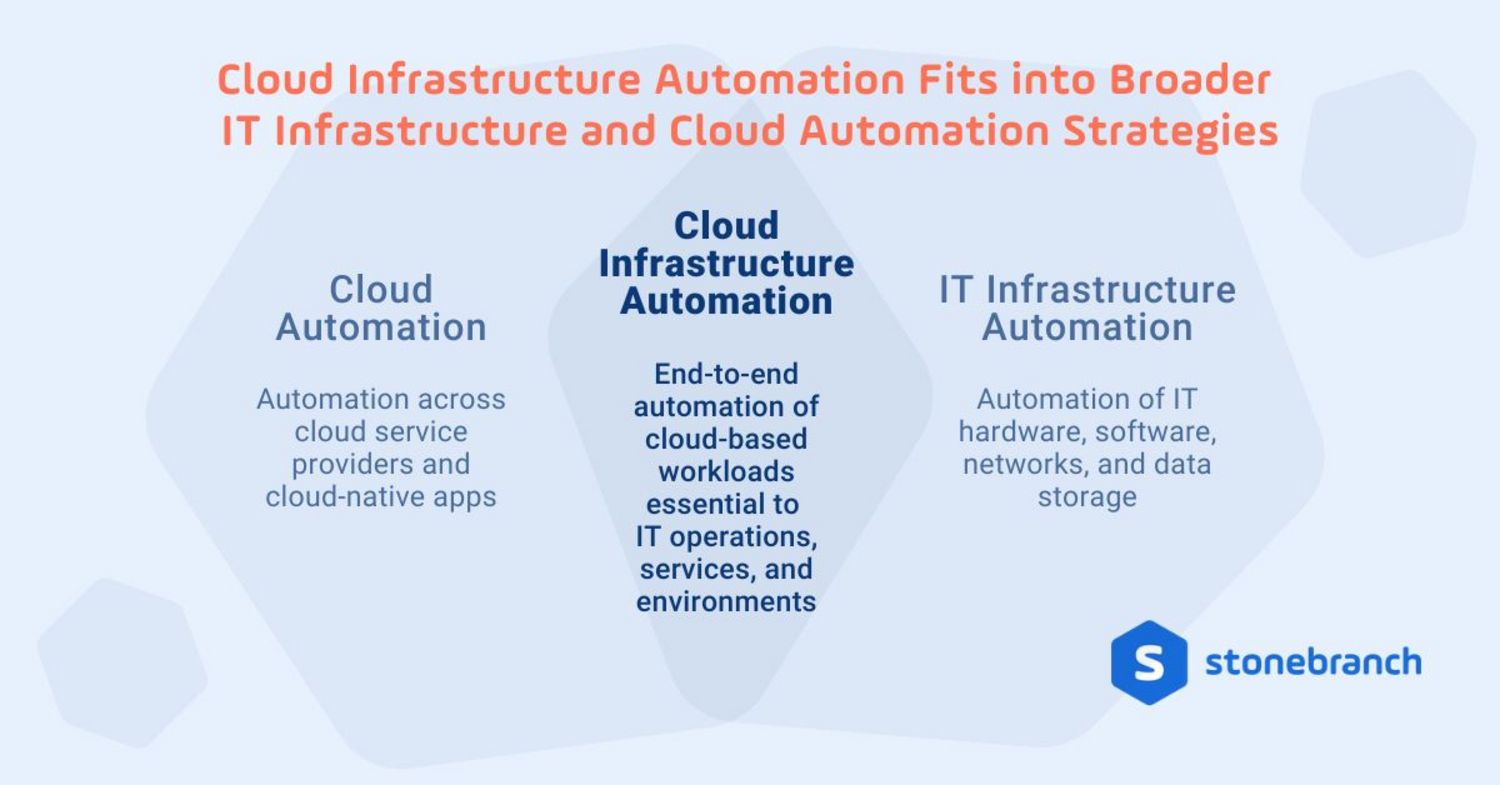
Part of IT Infrastructure Automation Strategy
IT infrastructure automation refers to the end-to-end automation of critical IT resources spanning on-premises hardware, software, networks, and data storage. Cloud infrastructure automation serves as a critical component of this broader strategy by:
- Standardizing IT operations: Automating policies and configuration management in cloud environments ensures consistency.
- Optimizing resource utilization: Automated provisioning, scaling, and de-provisioning reduce waste and enhance efficiency.
- Reducing human error and manual work: IaC frameworks enable repeatable, error-free deployments.
Part of Cloud Automation Strategy
Cloud automation focuses specifically on managing resources across multiple service providers (AWS, Azure, Google Cloud, private clouds) and cloud-native applications. Cloud infrastructure automation plays a vital role in this broader strategy by:
- Orchestrating cloud workloads: Ensuring seamless deployment, scaling, and monitoring across cloud environments.
- Enhancing DevOps and CI/CD pipelines: Automating cloud provisioning to support continuous integration and continuous delivery / deployment lifecycles.
- Managing cloud costs: Preventing over-provisioning and optimizing cloud spend through automated policies.
By integrating aspects of both infrastructure automation and cloud automation strategies, enterprises gain better control, scalability, and cost efficiency across their entire IT landscape.
Best Practices for Cloud Infrastructure Automation
Infrastructure as Code
IaC is the practice of using code to define, manage, and provision infrastructure configurations. Using automation instead of manual processes helps ensure consistency and scalability across cloud environments.
- Use modular templates to define reusable infrastructure components.
- Implement GitOps workflows to version-control infrastructure changes.
- Conduct automated compliance checks to detect misconfigurations.
Policy-Based Automation
Through predefined rules and policies, it's possible to govern security, compliance, and cost controls without manual intervention.
- Apply role-based access control (RBAC) to enforce least privilege policies.
- Automate infrastructure drift detection and remediation.
- Use cloud cost optimization tools to manage resource utilization.
Self-Service Cloud Provisioning
With IaC templates and RBAC in place, organizations can empower developers to request and deploy infrastructure on demand without manual intervention. This approach offers developers independence while saving time for IT ops teams.
- Offer a web portal or interface for users to request cloud resources.
- Use automated monitoring tools to set utilization thresholds for provisioning and deprovisioning.
- Train users on self-service tools and the importance of cloud cost management.
Container Management
Containerized cloud-native applications rely on Kubernetes, OpenShift, and serverless platforms for container management. To maximize efficiency, organizations should:
- Leverage Kubernetes operators for automated cluster management.
- Use policy-driven automation for scaling and networking.
- Integrate auto-healing and self-recovery mechanisms to ensure high availability.
Disaster Recovery and High Availability
Automated backup and failover mechanisms ensure business continuity in case of cloud outages.
- Automate failover processes to seamlessly switch workloads between cloud regions.
- Use infrastructure automation to regularly test and validate disaster recovery plans.
- Leverage cloud-native backup solutions that support incremental backups and rapid restoration.
Instead of implementing each of these practices in separate tools, it's possible to consolidate them into a service orchestration and automation platform (SOAP).
Why Automate Cloud Infrastructure with a SOAP?
A SOAP acts as a central hub to automate cloud infrastructure by managing and orchestrating processes across many tools and environments. SOAPs help organizations achieve:
- Meta-Orchestration: SOAPs integrate with pure-play infrastructure, container, and other management tools to orchestrate end-to-end workflows for seamless operations and enhanced observability.
- Direct Infrastructure Management: For organizations not yet using pure-play tools, a SOAP can directly manage and use cloud infrastructure by connecting to cloud service providers and enabling IaC principles. This flexibility allows organizations to automate cloud infrastructure without investing in specialized tools.
- Security and Compliance: SOAPs offer built-in security features that help enforce compliance policies across your infrastructure. Automated security checks and compliance audits ensure that your cloud environment adheres to industry standards.
- Observability: A SOAP can monitor the performance of applications and infrastructure whether on-prem or cloud-based. It can also automate alerts and remediation to prevent downtime and improve system reliability.
- Cost Optimization: By centralizing and streamlining automation processes, a SOAP can help organizations optimize costs, reducing the complexity and overhead associated with managing multiple automation tools.
How Stonebranch Enables Cloud Infrastructure Automation
Stonebranch empowers enterprises to orchestrate and automate cloud workloads with a unified platform. Universal Automation Center (UAC) is a SOAP that provides:
- Self-service automation for cloud provisioning and hybrid IT environments.
- End-to-end workload orchestration across AWS, Azure, GCP, and on-premises environments.
- Seamless integrations to manage processes in tools like Terraform, Ansible, Kubernetes, Jenkins, Jira, and ServiceNow.
To learn how Stonebranch UAC can transform your cloud infrastructure automation strategy, schedule a demo today!
Start Your Automation Initiative Now
Schedule a Live Demo with a Stonebranch Solution Expert

